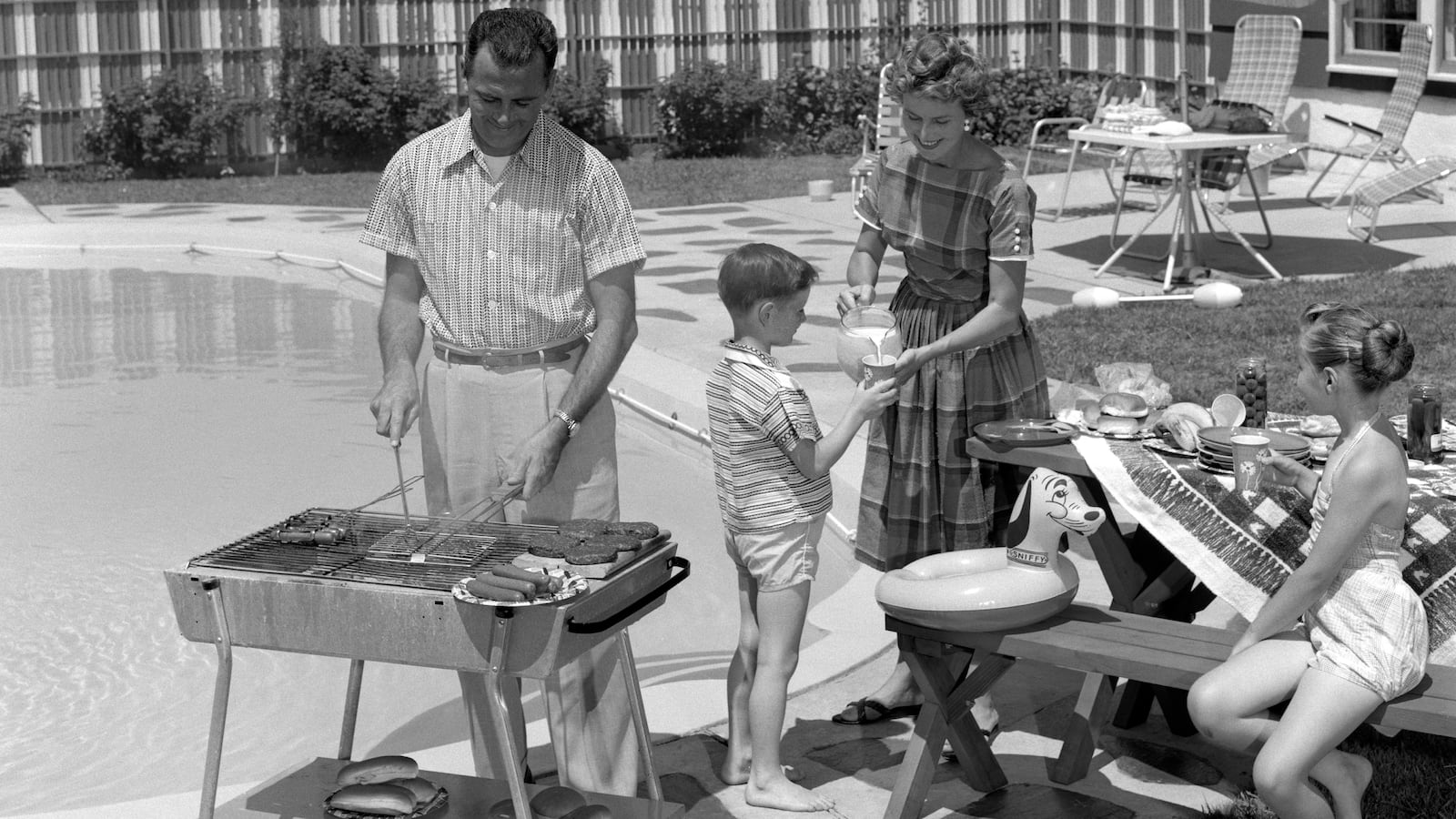On July 4, the National Hot Dog and Sausage Council (yes, a real organization, part of the Meat Institute) estimates that more than 150 million hot dogs will be devoured across the nation. That’s enough dogs to stretch from Washington D.C. to Los Angeles and back five times.
So as you get ready for the 4th, how to make sure that your dogs are delicious? The Daily Beast surveyed the options, and here’s our handy hot dog guide:
Build a Moderate Fire
The key to a perfectly grilled hot dog is moderate heat. Too much heat can cause the hot dogs to burst, losing their juiciness and flavor. Aim for a temperature range of 325 to 375 degrees Fahrenheit. If you’re using a charcoal grill, wait until the coals are covered in ash before placing the hot dogs on the grate. For a gas grill, preheat to medium heat. A good test is to hold your hand about 4 or 5 inches above the grates; you should be able to keep it there for six to seven seconds comfortably.
Minimal Prep
While there are many creative ways to prepare hot dogs, keeping it simple often yields the best results. In tests, slicing or carving patterns into hot dogs resulted in a significant loss of moisture and fat. The best method is to grill them whole, directly from the package. For natural casing hotdogs, pricking them with a fork before grilling can help release steam and prevent bursting.
Grill Placement
To maximize flavor and prevent rolling, place the hot dogs parallel to the grill grates. This technique exposes more surface area to the heat, ensuring even browning. Make sure there is at least an inch between each hot dog to allow proper heat circulation, and turn them every minute for consistent cooking.
Spiraled Hot Dogs
Spiraling hot dogs can be a fun way to add texture and increase the surface area for caramelization. Use a skewer and carefully cut a spiral pattern around the hot dog. This technique not only looks impressive but also holds more toppings.
Butterflied Hot Dogs
Butterflying involves slicing the hot dog lengthwise but not all the way through, allowing it to lay flat on the grill. This method creates a crispy exterior and a channel for holding toppings. However, be mindful that butterflied hot dogs can dry out more quickly.
Cross-Hatched Hot Dogs
For those who enjoy a bit of artistry, cross-hatching can be an appealing option. Make shallow cuts in a criss-cross pattern around the hot dog. This increases the browned bits and adds a unique texture.
Fish-Scaled Hot Dogs
Fish-scaling involves making diagonal cuts on both sides of the hot dog, creating a pattern that resembles fish scales. This method not only enhances the appearance but also helps the hot dog cook more evenly and allows for a crispy texture. The increased surface area from the cuts also allows more smoky flavor to penetrate the hot dog.
Traditional Whole Hot Dogs
The simplest and perhaps most satisfying method is to grill the hot dogs whole. This preserves the juiciness and flavor, ensuring a delicious bite every time.

The classic Chicago dog is just one way to grill our national treasure.
The Washington Post/GettyPatience and Attention
Grilling hot dogs may seem straightforward, but patience and attention to detail make all the difference. Gradually warming the hot dogs on a moderate fire allows for a smoky flavor to develop without risking dryness.
Finishing Touches
Once your hot dogs are grilled to perfection, the fun begins. Classic buns, toasted on the grill for a minute, add a delightful crunch. Toppings are where you can get creative: from traditional ketchup, mustard, and relish to gourmet options like avocado, sriracha mayo, or kimchi.
Ben Sherwood, publisher and CEO of The Daily Beast, is a longtime hot dog enthusiast, especially the legendary Dodger Dog. Sherwood is a proud native of Los Angeles, which consumes more hot dogs (35.7 million pounds) than any city in America, according to the most recent figures from the National Hot Dog and Sausage Council, ahead of New York and Dallas.






